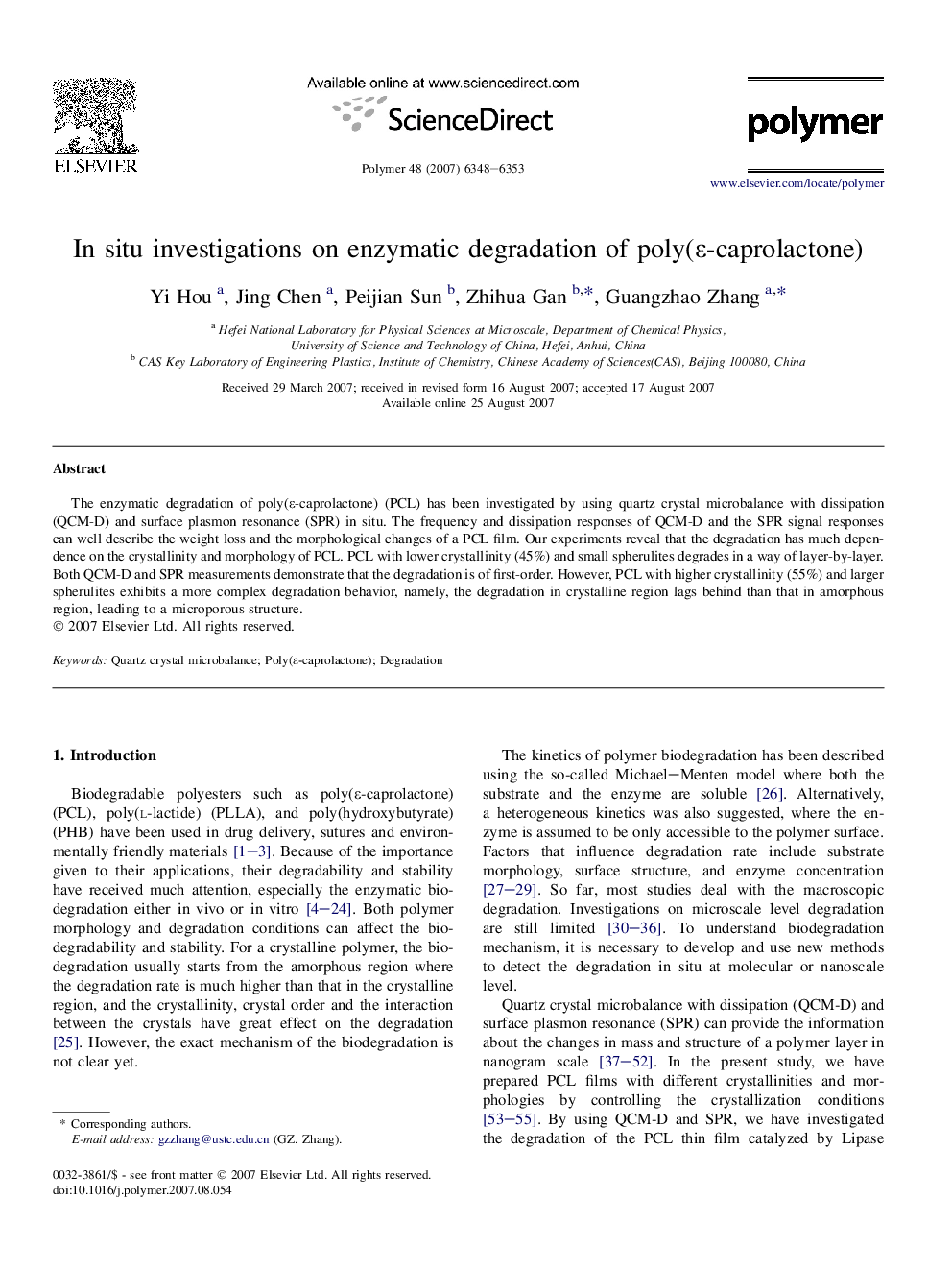| Article ID | Journal | Published Year | Pages | File Type |
|---|---|---|---|---|
| 5188528 | Polymer | 2007 | 6 Pages |
Abstract
The enzymatic degradation of poly(É-caprolactone) (PCL) has been investigated by using quartz crystal microbalance with dissipation (QCM-D) and surface plasmon resonance (SPR) in situ. The frequency and dissipation responses of QCM-D and the SPR signal responses can well describe the weight loss and the morphological changes of a PCL film. Our experiments reveal that the degradation has much dependence on the crystallinity and morphology of PCL. PCL with lower crystallinity (45%) and small spherulites degrades in a way of layer-by-layer. Both QCM-D and SPR measurements demonstrate that the degradation is of first-order. However, PCL with higher crystallinity (55%) and larger spherulites exhibits a more complex degradation behavior, namely, the degradation in crystalline region lags behind than that in amorphous region, leading to a microporous structure.
Related Topics
Physical Sciences and Engineering
Chemistry
Organic Chemistry
Authors
Yi Hou, Jing Chen, Peijian Sun, Zhihua Gan, Guangzhao Zhang,
